Summer is here. It’s already mid-July, and instead of apologizing for ghosting you for three months, I'm back for a proper yap session.
I’ve been thinking a lot about food.
I know, that’s a departure from my usual writing, and I’m sure you already go to Cafe Lulu to get your fill of food-related content, but stick with me for a second.
Some of my favorite fruits and vegetables are in season during this time and the colors of fresh summer produce have been bleeding into my wardrobe.
It’s just, I can’t help but notice when I’m peeling corn that the stunning translucence of its husk reminds me so much of the pleats in Issey Miyake’s collections. To me, the color gradient of a purple carrot is very reminiscent of a hand-dyed elder statesmen sweater, and you can’t convince me otherwise!
These are the delusions that plague my mind.
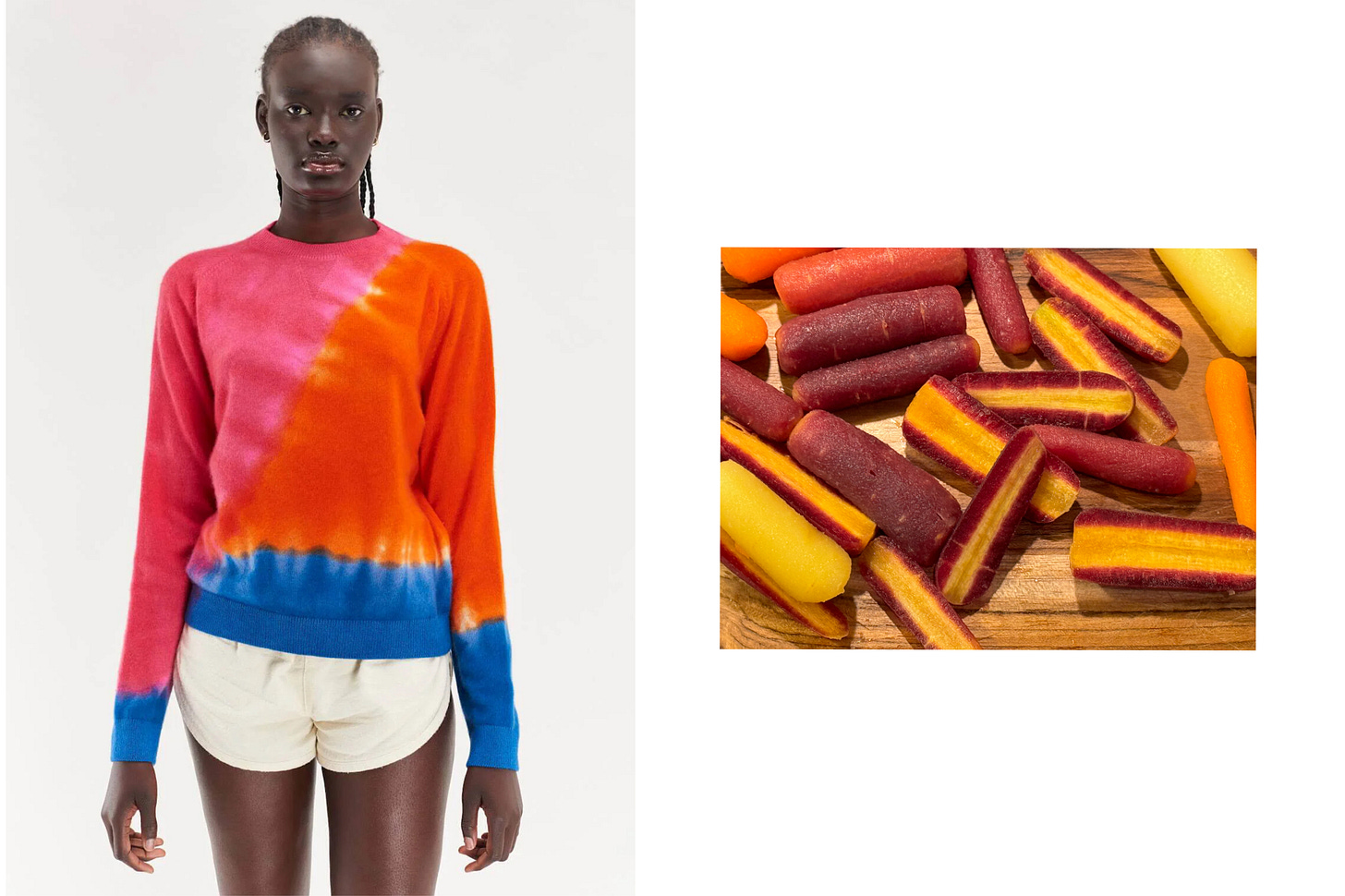
Seriously though, I think there’s something to be said about the similarity within the artistry of creation. All good designers, like good chefs, take inspiration from the natural world around them. Maybe this is why the best clothes, to me, are simple. In many ways, Mother Nature is already the greatest architect of luxury design.
There’s something happening in food spaces right now. A marriage between luxury fashion and food as an art installation. Think: The Row serving figs on silver platters at their SS23 show. Think: Balenciaga collaborating with Erewhon. Think: the Loewe tomato.
It’s about maximizing their joint-slay, if you will.
Yet they are still subjected to the feeble axis of the trend cycle. Food trends come and go just like fashion does.
The more I explore the intricacies of this partnership in food and fashion, I realize that whether your canvas is a mannequin or a plate: fashion and lifestyle are inextricably linked.
Trendy food
Time is no stranger to food trends. In the 1800’s, one of the most notable was celery. It had the perfect trend formula. It was rare, being that it was so difficult to grow making it easily susceptible to hype and excess buying. Its novelty and exotic reputation made it an ideal status symbol among upper class Victorians.
At the end of the day, food has always been a status symbol. Posting your ceremonial matcha recipe says as much about you as wearing a pair of tabis does. This is a departure from the 2014 Tumblr blk water posting, to supper clubs. To growing your own food. To food as an art installation.
It’s nearly impossible to ignore the rise in food content online. We have the pandemic to thank for that. What else was there to do besides post your banana bread recipe or the sourdough starter you made from scratch.
I’m guilty of this as well! Being on lockdown is the reason I started baking and cooking more frequently. It’s the reason I started thinking more thoughtfully about presentation, as well. I cite Eliza Mozer and Doof Magazine as being inspirations in my early food blogging days.
It became a fun hobby. One that I was privileged to discover. Especially being someone who, up until then, had mostly viewed food as fuel thanks to my humble upbringing in an immigrant household.
Those early days in lockdown, being chronically online and scrolling through hundreds of daily routines, finding culinary art was refreshing. It was a form of community that was accessible. It made learning how to cook, growing food, and eating seasonally attainable, and most importantly, fun.
Luxury Food
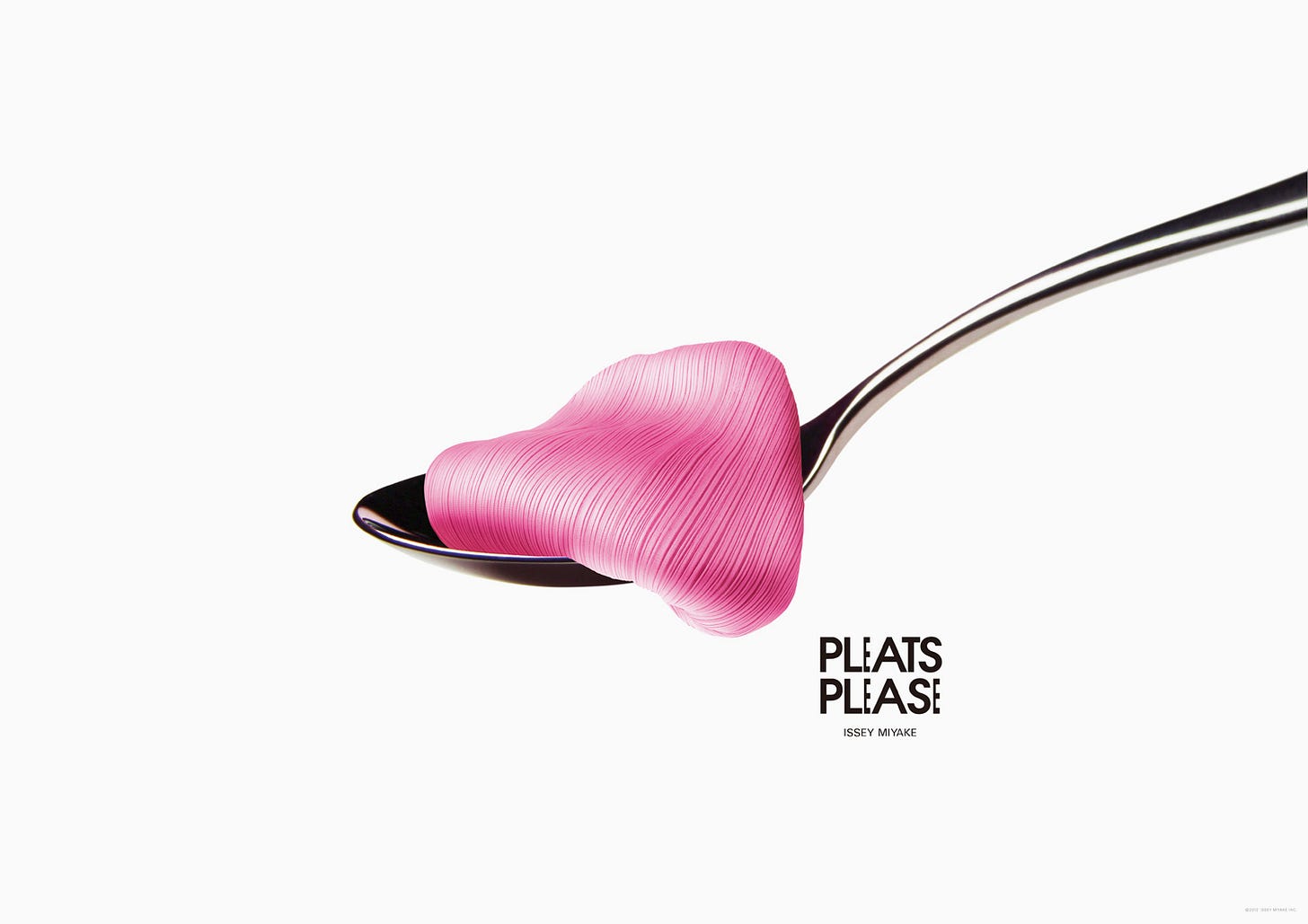
Taku Satoh, the mastermind behind the 20th anniversary ad campaign for Issey Miyake’s Pleats Please collection, compares our desire for food to that of fashion. He stated that for the campaign he “wanted to create a visceral reaction; something akin to ‘that looks delicious’ and ‘I want to wear that.’”
What an ingenious way of tapping into our carnal desires for gluttony and excess. The truth is, we don’t need to buy designer pieces to look our best. We don’t need to shop at Happier Grocer or Erewhon to eat well. Yet, it feels so good to eat luxury…
To some, food is merely a prop used to sell products. Brand analysts predict that the luxury food sector has huge potential for growth, and we’ve seen that with so many independent luxury food marketplaces that have popped up online: marketplaces like Flamingo Estate, The Dinner Club Shop, and Gohar World to name a few.
Their ethos is simple: exclusive products and food made in small batches by artisan makers. What is more luxurious in today’s fast paced world than small-batch olive oil harvested from hundred-year-old trees in Italy?
This is the same formula sold by many fashion houses today. Exclusivity, one-of-a-kind pieces, and a heritage. A brand’s heritage, or namesake and the mythology that comes with it is all part of the psychology of consumerism. What is it that they’re signaling and why does it align with you?
Let’s take the heirloom tomato as an example. Heirloom plants come from seeds that have been carefully saved and handed down through generations, hence its name. Farmers will save the seeds from the best plants and use those to grow more.
This makes it a perfect addition to the Loewe brand’s visual lexicon. Jonathan Anderson is no stranger to taking inspiration from gardens in his designs for the fashion house. The tomato bag that he shared to his story after the viral tweet is a design he already had as part of next season’s collection.
Anderson is known for putting Loewe on the map again. His designs are fresh and forward thinking, and you can tell he obviously has a finger on the pulse of the broader cultural zeitgeist with his nature-inspired pieces.
Food as art
There are a few food-art studios that have popped up recently, and I’m so fascinated by how they merge product, art, and design. Here are some of my favorites.
Tiberi Club
Tiberi Club is an events and art direction studio based in Spain, they create food installations that merge performance art with fashion in a whimsical way. Their mission statement is:
Events, art direction and communication through the act of eating.
Ananas Ananas
Ananas Ananas is a food-art studio founded by Verónica González and Elena Petrossian. Storytelling is a big element in what they do and they create immersive culinary experiences or edible installations.
I think what I enjoy about their work, and about art, is that it forces you to confront everyday activities from a new perspective. Their take on experimental dining makes you question what food is and what it can be. It pushes the potential for food and art to an endless capacity.
Gab Bois
Speaking of whimsy, Gab Bois is an artist that I feel like I’ve followed since the inception of instagram, like her art was made for the platform and for the digital age. She makes witty, elevated displays of everyday objects out of recycled materials. She’s most known for making clothing items out of food such as her popular orange bra.
I think her pieces poke fun at reality and the fashion world as a whole. It makes you question the validity and existence of her art, is it real or is it AI?
Gabriella Melo
I’m also here to show off a concept my friend Becca and I shot a few months ago that didn’t make it anywhere else but feels appropriate for this fashion x food newsletter. A table scape featuring live goldfish, jello, and blue hues.




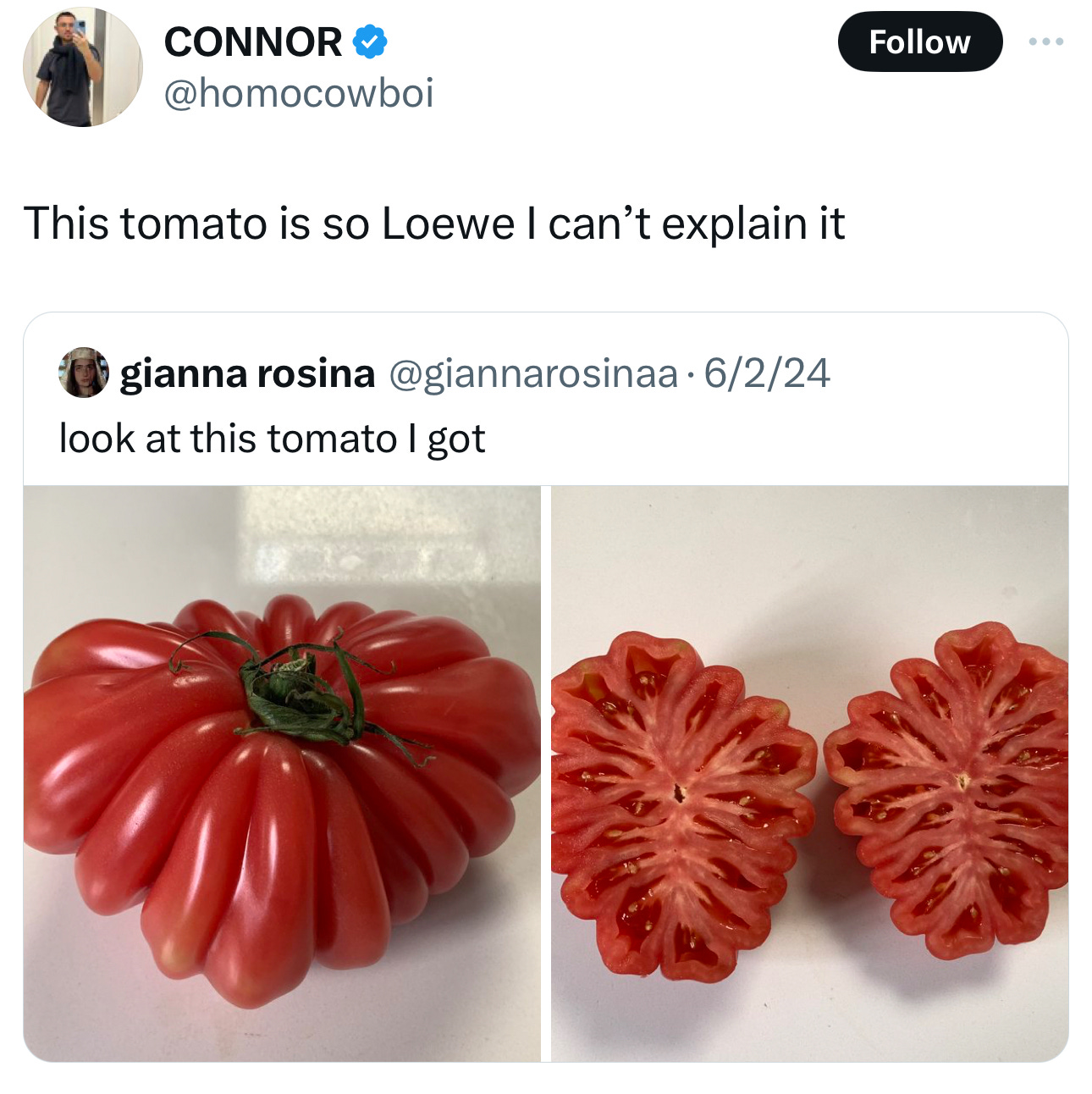
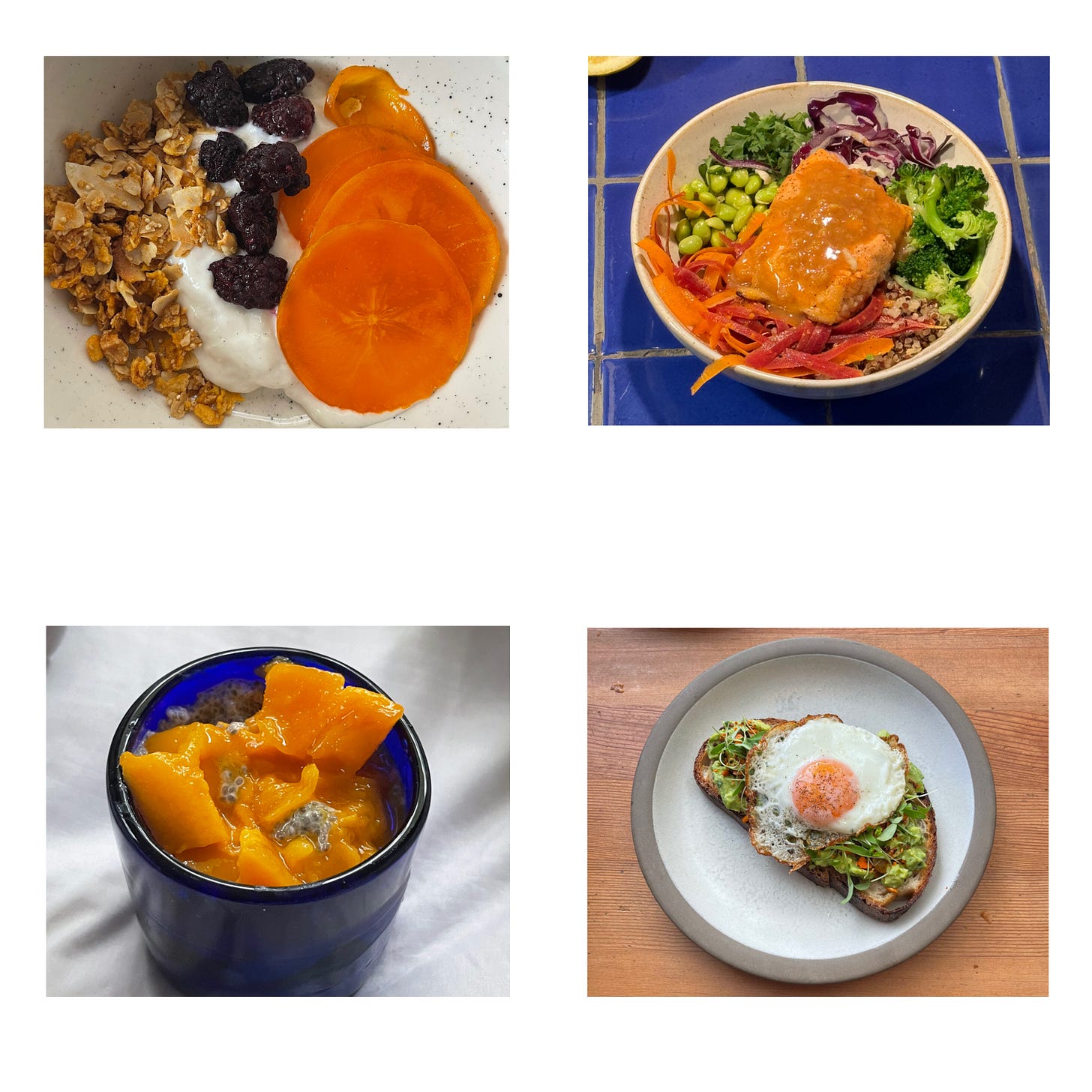

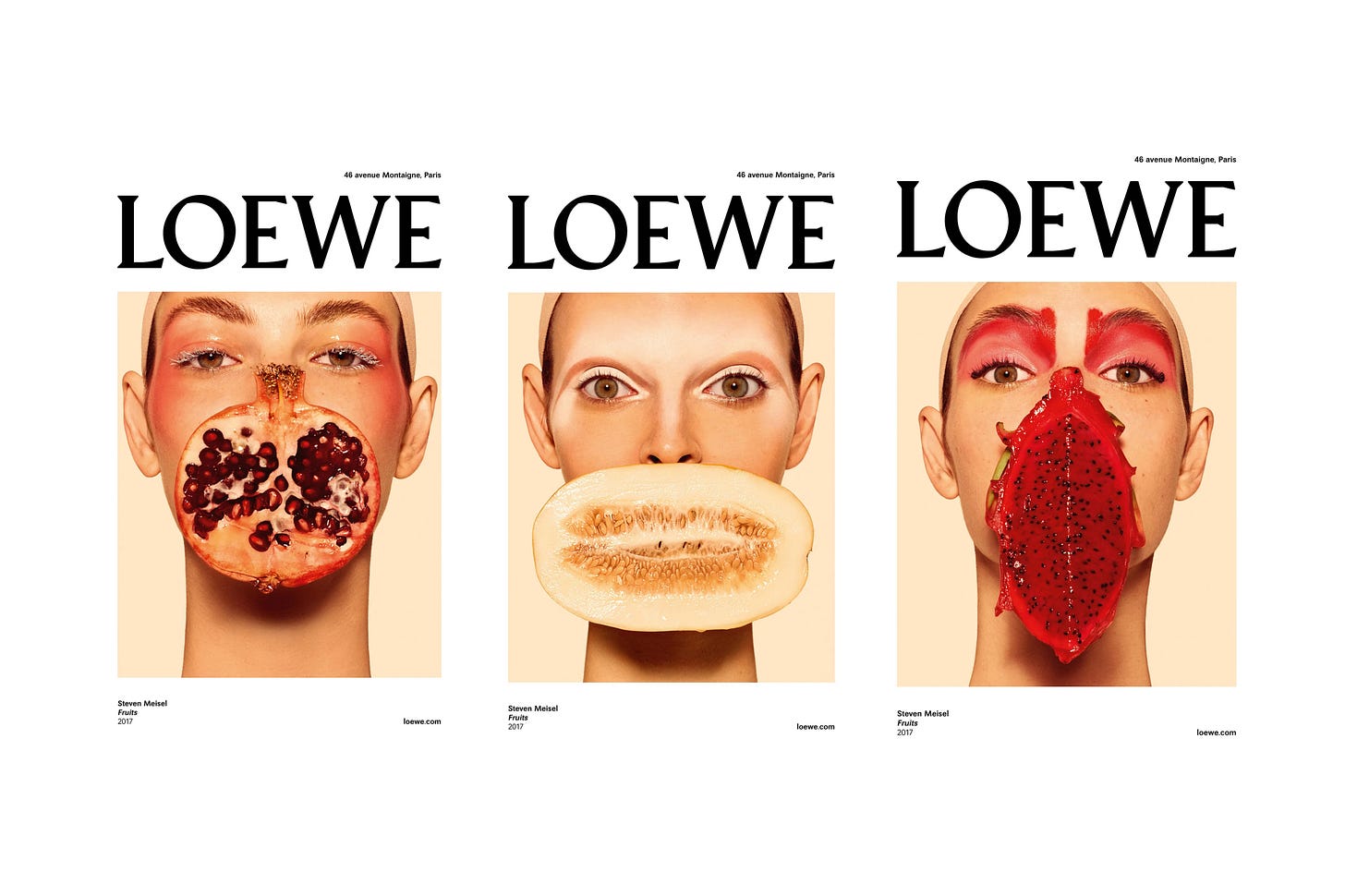
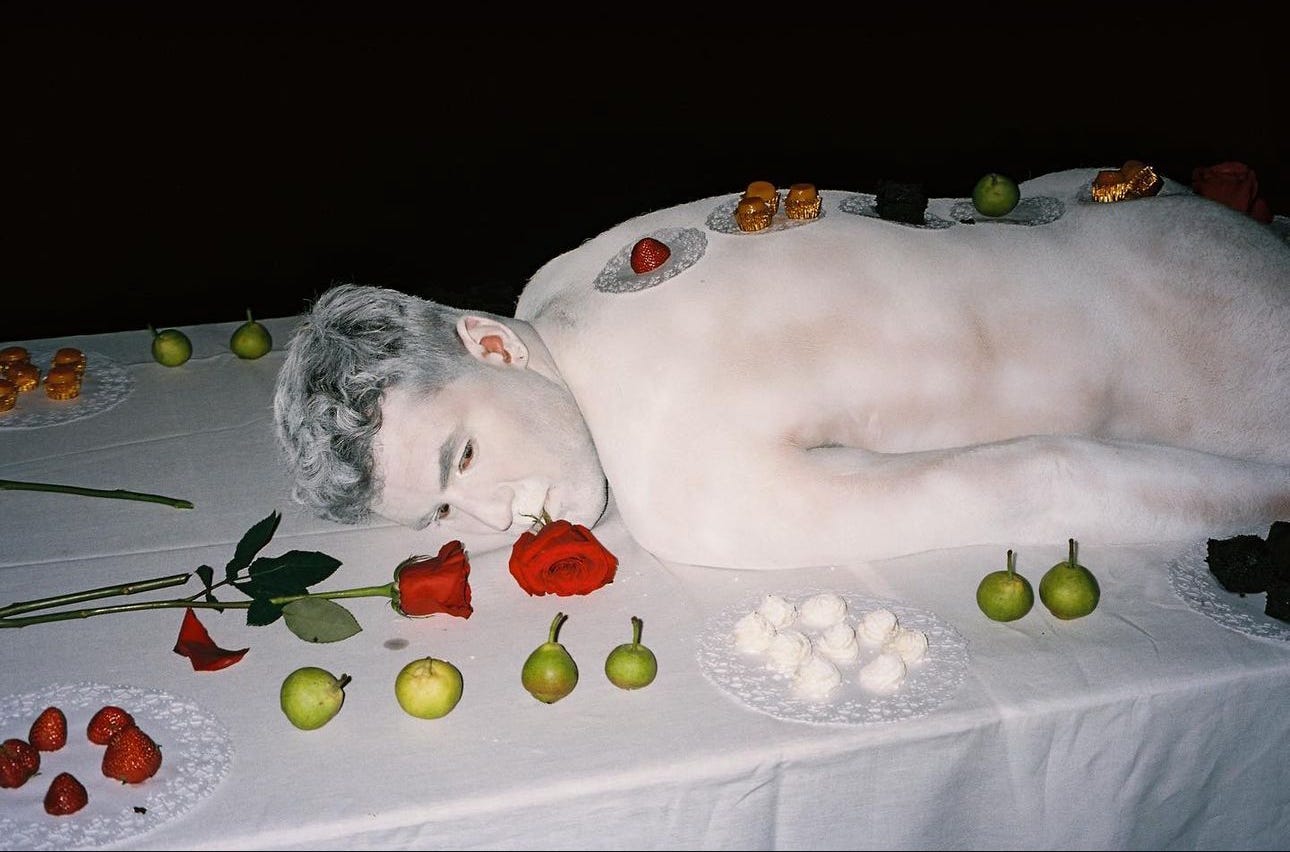

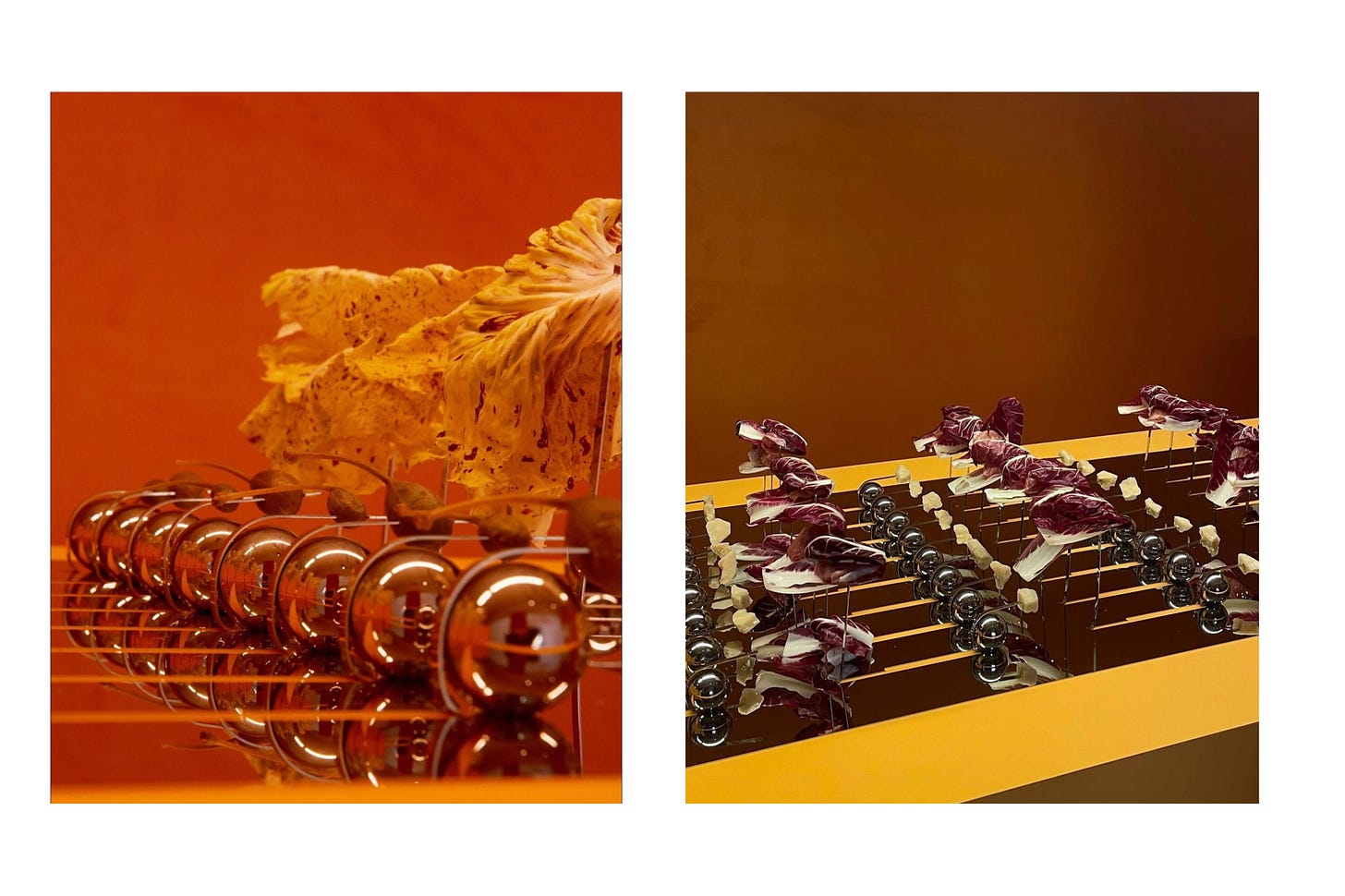

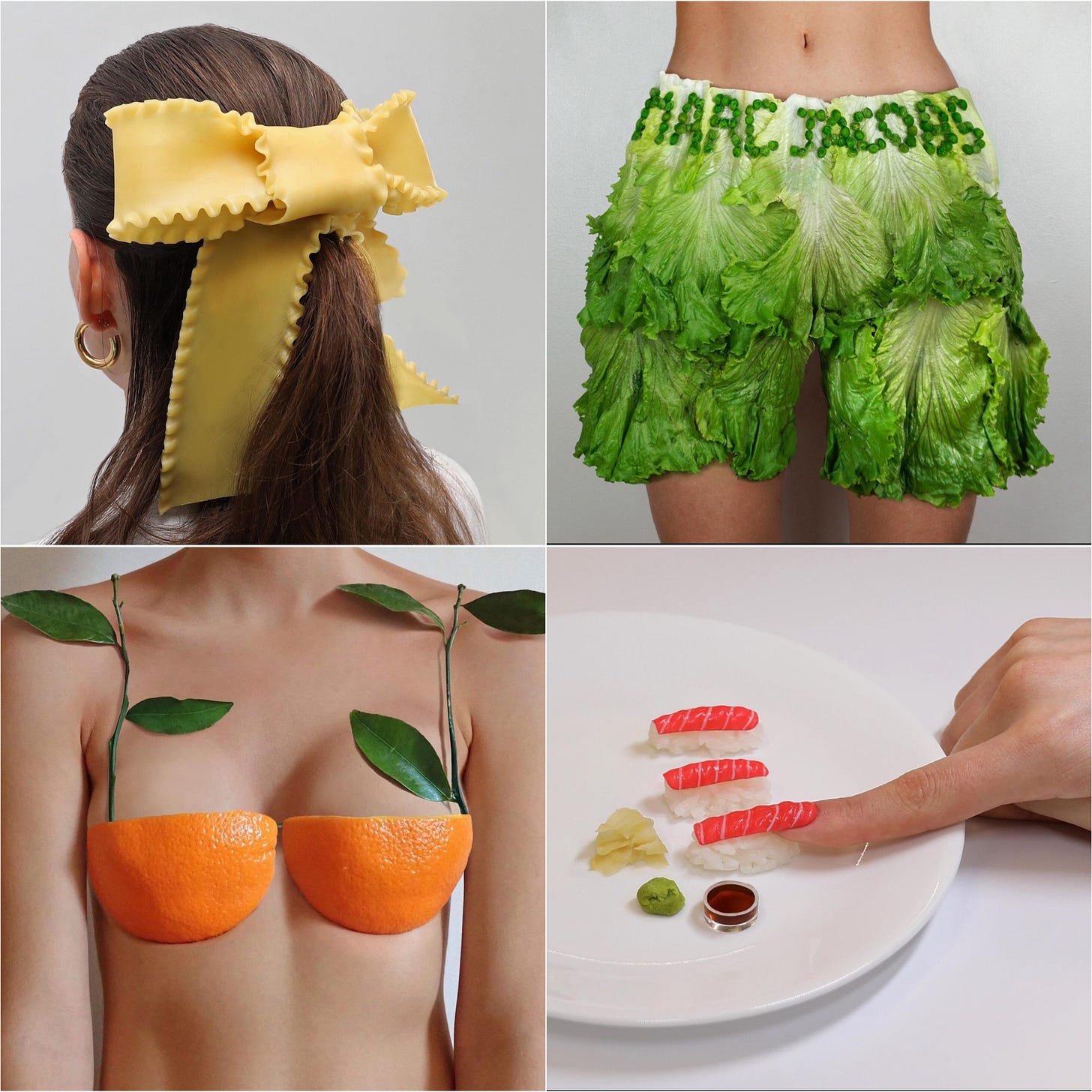
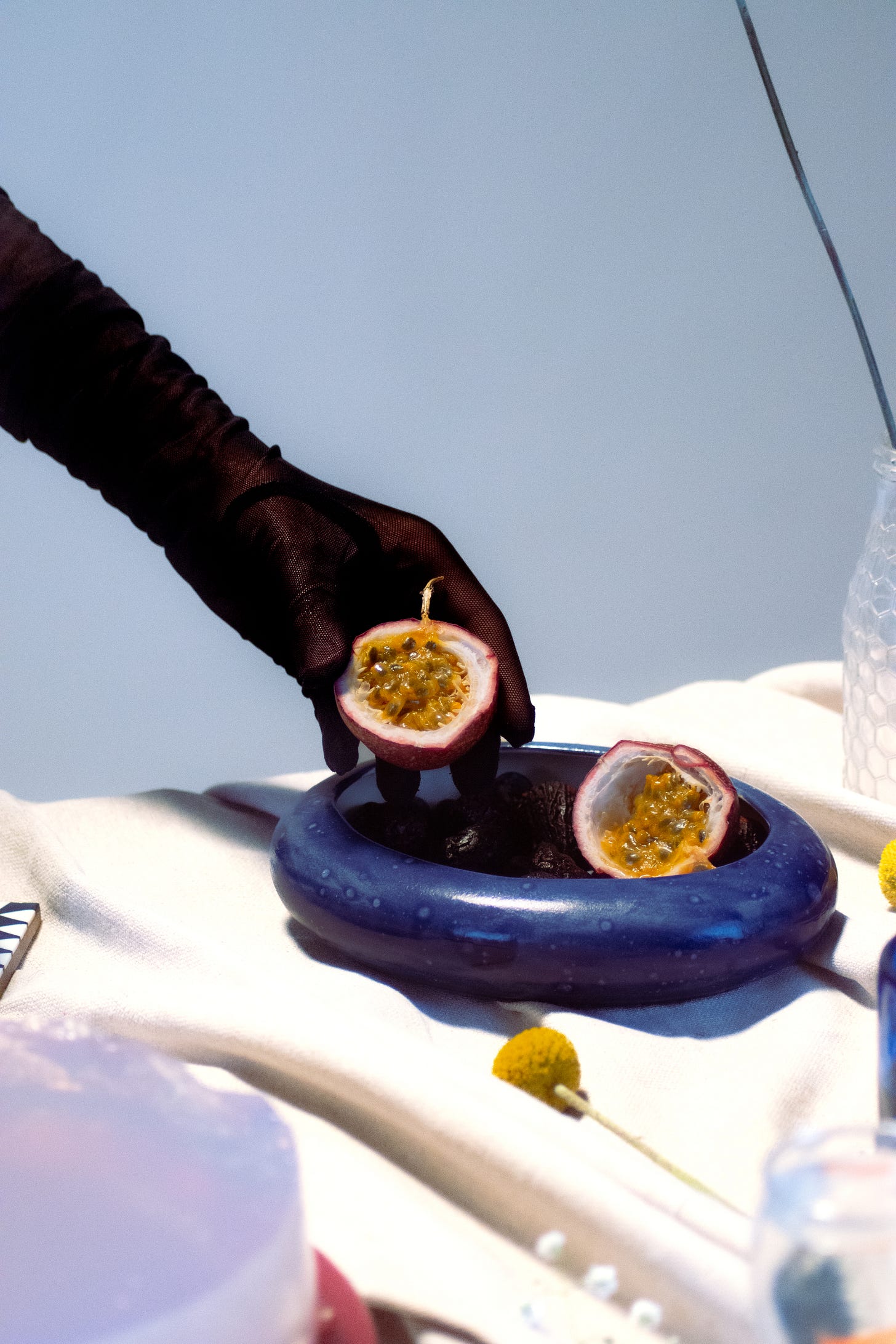

first 🐾